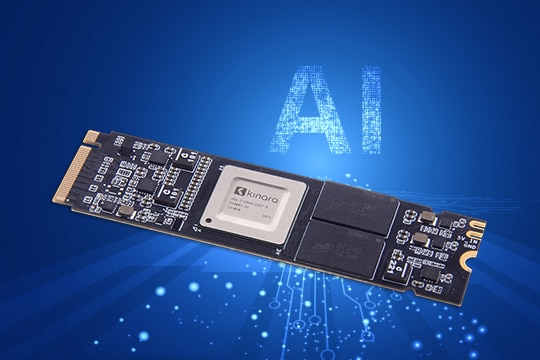As AI continues to dominate tech headlines, everyone’s talking about “large models,” “AI acceleration,” and “intelligent computing.” But when it comes to real-world deployment, compute power is the true currency. Have you noticed that more AI companies are no longer relying solely on GPUs—or even TPUs? Instead, a new term is gaining traction: Artificial Intelligence Acceleration Card.
In this article, we’ll explain what AI Acceleration Card really are, why they’re challenging the dominance of GPUs and TPUs, and where they shine in practical applications—from the perspective of an industry insider.

1. What Exactly Is an AI Acceleration Card?
Despite the name, an Artificial Intelligence Acceleration Card isn’t “intelligent” by itself—it’s designed to accelerate intelligent computing tasks. Think of it as a purpose-built accelerator optimized for AI model training, inference, and large-scale data workloads.
Unlike general-purpose GPUs or application-specific TPUs, AI Accelerator are tailored for AI’s unique demands: high compute density, efficient parallel processing, and advanced model optimization.
Quick Definitions:
- AI Acceleration Card: Specialized compute hardware for AI training, inference, and big data processing.
- GPU (Graphics Processing Unit): Originally for graphics rendering, now widely used for general AI training.
- TPU (Tensor Processing Unit): A neural-network-optimized chip developed by Google, mostly used within its own ecosystem.
2. GPU and TPU: Still Strong, but Not Without Weaknesses
Let’s be fair—GPUs and TPUs have been essential to AI’s evolution. But their limitations are increasingly visible in the era of trillion-parameter models.
| Accelerator | Strengths | Weaknesses |
|---|---|---|
| GPU | Highly versatile; supports most AI frameworks; mature ecosystem; excellent parallelism | High power consumption, expensive, complex resource scheduling |
| TPU | Optimized for deep learning, especially within TensorFlow | Less flexible, mostly limited to Google’s cloud ecosystem |
Today’s AI workloads require not just performance but also efficiency, cost-effectiveness, and customization—areas where AI Acceleration Cards stand out.
3. What Makes AI Accelerator So Competitive?
1. Purpose-Built Design
Unlike general-purpose GPUs or the narrowly focused TPU, AI Accelerator are often designed for specific AI scenarios—such as natural language processing (NLP), computer vision (CV), or large-model inference. They support low-precision computing (INT8, BF16) and advanced matrix operations for greater efficiency.
2. Higher Compute Density
Some AI Accelerators offer outstanding performance-per-watt. For instance, a single AI Accelerator can deliver up to 214 TOPS while maintaining power consumption below 25W—ideal for energy-sensitive environments.
3. Broad Compatibility
Modern AI Accelerator support mainstream AI frameworks like PyTorch, TensorFlow, and ONNX, and are compatible with both x86 and ARM platforms.
4. Enterprise-Grade Isolation
For cloud and data center deployments, AI Accelerators often support multi-tenant isolation, secure data partitioning, and elastic scaling, making them a favorite among cloud providers and enterprise IT teams.
4. Real-World Applications
- Large-Scale Inference Clusters
Enterprises running large-scale inference tasks—such as language models or recommendation systems—choose AI Accelerators for their low power consumption, high throughput, and compatibility with mainstream frameworks. - Edge AI Deployment
In edge scenarios like smart factories, surveillance, and autonomous vehicles, space and power constraints matter. AI Accelerators are smaller and more power-efficient than traditional GPUs, making them ideal for on-device inference. - Financial Risk Control & Big Data Analytics
Data centers use AI Accelerators to accelerate structured data processing and real-time prediction, especially in high-frequency trading, fraud detection, and credit scoring—areas that demand fast, low-latency AI decisions.
5. Benchmark: AI Accelerators vs. GPU – Which Performs Better?
Let’s look at actual deployment data from an AI startup:
| Metric | Mainstream GPU | AI Accelerators | Difference |
|---|---|---|---|
| Single-Card Performance | 312 TFLOPS | 214 TOPS | Slightly lower, but sufficient for most inference tasks |
| Power Consumption | 300W | 12W | AI Accelerators is significantly more energy-efficient |
| Cost | ~$5,000 | ~$300 | AI Accelerators offers much higher cost-efficiency |
| System Integration | Requires specialized PSU + motherboard | Flexible with x86/ARM platforms | AI Accelerators wins in flexibility |
Bottom line: While AI Accelerators may not surpass GPUs in raw power, they outperform in deployment efficiency, cost-effectiveness, and energy savings—especially for inference.
6. AI Accelerators: The New Workhorse of AI Deployment
AI is no longer a lab experiment—it’s driving transformation in finance, manufacturing, healthcare, education, and government services. The winning AI infrastructure must be affordable, scalable, and deployment-ready.
The trend is clear:
- Training tasks are still dominated by GPUs.
- Inference and real-world deployment are shifting rapidly toward AI Acceleration Cards.
- In edge computing, private cloud, and secure government systems, AI Acceleration Cards are often the only viable option.